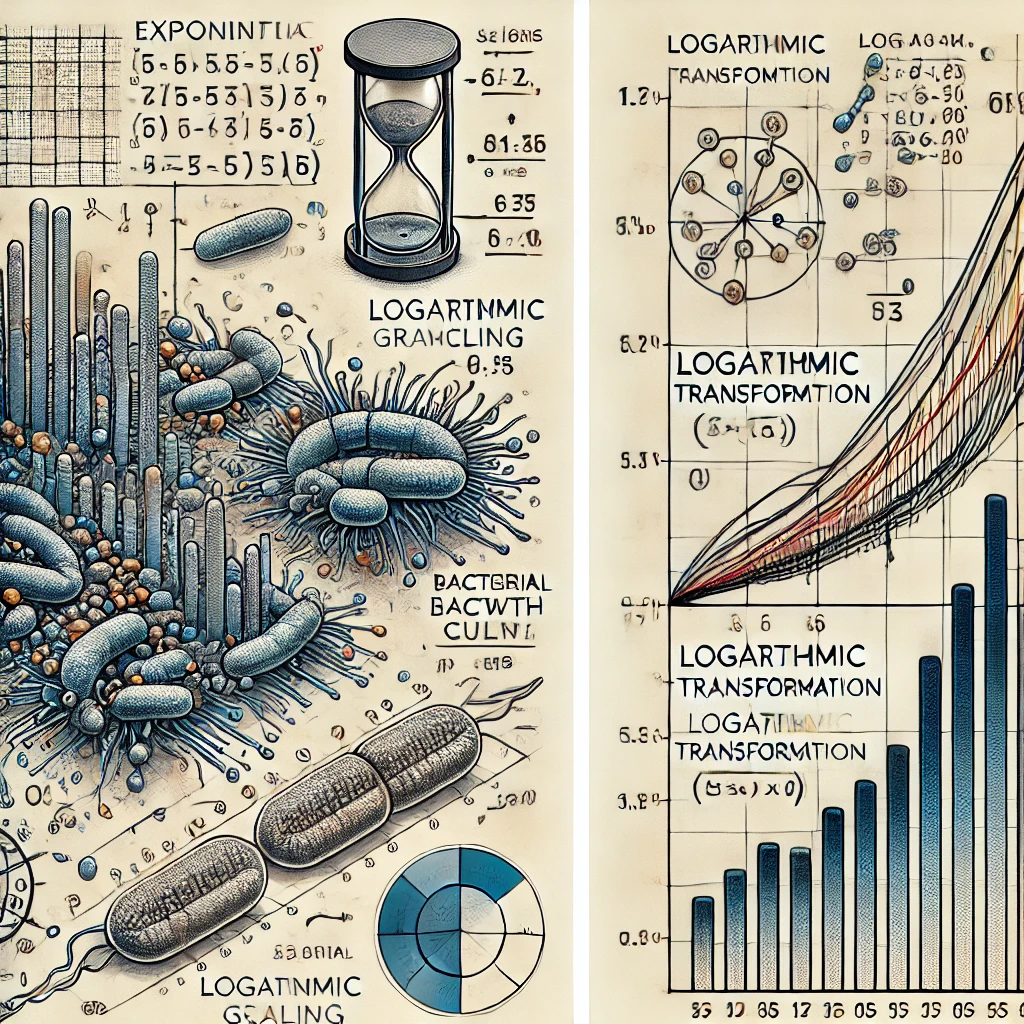Introduction
In the scientific domain, particularly in the study of cologenic data, the complexity of datasets often requires robust analytical methods. One such method, which significantly enhances the interpretation of data that spans several orders of magnitude, is logarithmic scaling. This article how to do log scale for cologenic aims to delve into the principles of logarithmic transformation, exploring its necessity and applications in cologenic studies, guiding readers through the methods, and highlighting common pitfalls and essential tools.
Deciphering the Essence of Logarithmic Scaling

Logarithmic scaling, or log scaling, is a mathematical transformation used to convert a wide range of data into a more manageable form. This how to do log scale for cologenic technique is particularly valuable in cologenic research, where data can vary exponentially. By applying a logarithmic scale to data, researchers can transform exponential relationships into linear ones, making patterns and relationships easier to identify and analyze.
Why Use Log Scale for Cologenic Data?
Cologenic data, which often includes measurements like growth rates, population sizes, or other biological factors that can vary across several magnitudes, is particularly how to do log scale for cologenic suited to logarithmic scaling. This approach not only simplifies the data but also minimizes the skewness that large values can introduce. As a result, it provides a clearer, more interpretable visual representation in graphs and plots, allowing for better comparison and more precise conclusions.
Step-by-Step Guide: Implementing Log Scale in Cologenic Analysis

Implementing logarithmic scaling in cologenic data analysis involves several critical steps, each important to ensure accuracy and effectiveness in data interpretation. Here’s how to do it correctly:
- Selecting the Base of Logarithm:
- Choose a base for the logarithmic scale. Common bases include 10, e (natural logarithm), and 2. The choice of base often depends on the context of the data and the standard practices of the specific field of study.
- Data Preparation:
- Ensure that all data points are positive, as logarithmic scales can only be applied to positive values. Zero or negative values need to be adjusted or handled separately.
- Application of the Logarithm:
- Apply the logarithmic transformation to each data point. This can typically be done using software tools or programming languages like Python, R, or MATLAB.
- Visualization:
- Visualize the transformed data using appropriate plotting techniques. Logarithmic axes should be clearly labeled to indicate that log scaling has been used.
- Interpretation:
- Interpret the results within the context of log-transformed scales, keeping in mind that differences on a logarithmic scale reflect multiplicative differences in the original scale.
Common Pitfalls in Logarithmic Scaling and How to Avoid Them
While log scaling is incredibly useful, certain common mistakes can lead to misinterpretation of data:
- Ignoring Zero or Negative Values: Since logarithms of zero or negative numbers are undefined, special care should be taken to adjust or exclude these values properly.
- Overlooking the Impact of Log Base Choice: Different bases can lead to different interpretations; thus, consistency and justification for the base choice are crucial.
- Misinterpretation of Scaled Data: Remember that changes in log-scaled data represent proportional changes in the original data, which can be overlooked without proper context.
Tools for Effective Logarithmic Transformation
Various software tools can facilitate the logarithmic transformation of cologenic data. Popular choices include:
- Statistical Software: R and Python offer extensive libraries, such as
ggplot2for R andmatplotlibfor Python, which support logarithmic scaling directly in their plotting functions. - Spreadsheet Programs: Tools like Microsoft Excel and Google Sheets provide functions to apply logarithmic transformations and plot the results.
- Specialized Scientific Software: MATLAB and similar tools also offer robust options for handling and visualizing logarithmically scaled data.
Applications of Logarithmic Scaling in Cologenic Research
Logarithmic scaling has a broad range of applications in cologenic research, including:
- Epidemiological Studies: Tracking the spread of diseases on a logarithmic scale can clarify the rate and extent of outbreaks.
- Environmental Science: Assessing pollutant levels and their exponential effects on ecosystems.
- Economic Modeling: Understanding economic growth patterns and predictions in demographic studies.
Conclusion
Logarithmic scaling is an indispensable technique in the toolkit of researchers working with cologenic data. By how to do log scale for cologenic converting wide-ranging data into a more linear and digestible format, it allows for a deeper and more accurate analysis of complex datasets. When applied correctly, it illuminates trends and patterns that might otherwise remain hidden, empowering scientists to draw meaningful conclusions and make informed decisions.
FAQs on Applying Logarithmic Scale to Cologenic Data
1. What is a logarithmic scale?
- A logarithmic scale is a way of displaying numerical data over a wide range of values in a condensed form. It’s particularly useful for handling data that varies exponentially, as it linearizes multiplication into addition, making trends easier to analyze and visualize.
2. Why use a logarithmic scale for cologenic data?
- Cologenic data, which often includes exponential growth patterns such as population dynamics or bacterial growth, benefits from logarithmic scaling as it simplifies the data, making it easier to interpret and compare.
3. Which logarithm base should I use?
- The choice of base depends on the data and your specific needs. Base 10 is commonly used for its ease of interpretation as it corresponds to orders of magnitude. However, base e (natural logarithm) might be preferred for continuous growth processes due to its mathematical properties.
4. How do I handle zero or negative values?
- Logarithmic transformations necessitate that all data values be strictly positive. Zero or negative values can be adjusted by adding a small constant to all values (e.g., if the smallest value is -2, add 3 to all data points) before applying the logarithm.
5. What tools can I use to apply a logarithmic scale?
- Many software tools support logarithmic scaling, including R, Python, MATLAB, and spreadsheet programs like Microsoft Excel and Google Sheets. These tools provide built-in functions to apply logarithmic transformations and visualize data.


